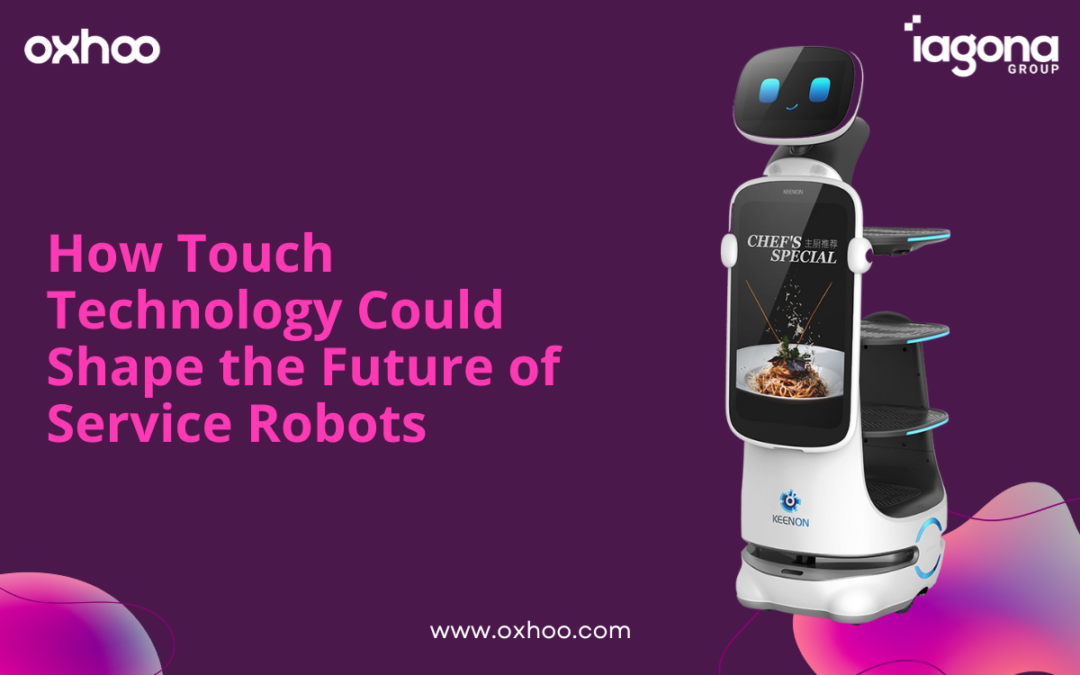If you want to get a glimpse of the future of service robots, a good place to start is its older cousin, the industrial robotics sector. Most of the robots we now have providing table service in restaurants and relaying items back and forth to rooms in hotels are built on technology pioneered in factories, warehouses, distribution centres and so on.
So what’s new in the evolution of industrial robots can be a reliable gauge for where service robot technology is heading, too.
This makes the recent announcement by Amazon that it has developed a robot with a sense of touch for its fulfilment centres of great interest to anyone keeping tabs on the development of robots in hospitality and retail. Amazon’s Vulcan robot uses its sense of touch to safely handle delicate items in picking centres, as well as react appropriately to minor accidental contact with objects and human co-workers, improving safety.
This got us wondering – what would a sense of touch add to the Keenon Robotics robots we supply to hospitality and retail customers?
What Is Robotic Touch?
First things first – what do we mean when we talk about robots having a sense of touch?
Just like so-called computer vision allows robots to navigate, interpret and interact with their environment by analysing images captured by a camera in an imitation of human eyesight, there are various ways that robotic technology can approximate our sense of touch.
The main requirement is to have some kind of tactile sensor, or a way to detect when a surface of the robot is in contact with an external object. Basic tactile sensors have been around a long time, but the type of information they give is also pretty basic – for example detecting whether there is contact with an external object versus not.
In more recent times, scientists and engineers have developed different tactile sensors capable of gathering a multitude of data about the quality of any touch. These include the now well-known capacitative sensors used in touchscreens, as well as those with exotic-sounding names like piezoelectric and piezoresistive sensors.
What’s important about these sensors in the context of robotics is that the data they collect can tell an AI control system things like the force or pressure involved in a touch, or details about the shape and size of an object. Fitted to a robot like Amazon’s Vulcan, this gives the machine a whole new toolset for sensing and interpreting objects it interacts with, allowing it to be more autonomous, more reliable, and capable of performing a wider range of tasks.
Benefits in Service Settings
So what benefits would this bring to the use of robots in hospitality and retail? We can see two key advantages:
1. Enhanced Safety & Precision
Advanced touch capabilities could represent a big breakthrough in the use of robots in retail. As is the case with the Vulcan robot, it will allow service robots to safely handle a wider range of products, including fragile items, for tasks like stock replenishment. Tactile sensors will also allow robots to navigate busy retail environments more safely.
Touch will also enhance what service robots are capable of in hospitality. Another benefit of more nuanced touch data is that it allows for more precise manipulation, especially of smaller objects. S,o for example, today’s service robots can carry meals and drinks to a diner’s table, but these items still have to be lifted off the tray by a person.
Thanks to touch technology, in the future we’re likely to see robots with dexterous artificial hands and limbs that are capable of lifting plates of food and glasses full of drinks – or even pour wine at the table – without any risk of unfortunate accidents.
2. Building Trust & Acceptance
The more ‘human-like’ robots are in their behaviours and abilities, the more they are perceived as trustworthy and competent by people. Having robots that can pour a drink for a diner or lift a delicate item down from a shelf to show a customer will help the public at large view robots as useful and helpful. So in that sense, the evolution of touch technology will help to accelerate the adoption of service robots by increasing consumer satisfaction in their use.
Through these combined benefits, touch technology could mark a tipping point for service robots. When thoughtfully designed with advanced tactile hardware, AI-powered control, and human-centric touch behaviours, robots can achieve a harmonious blend of machine efficiency and human warmth. The result? A service experience that feels unexpectedly personal – even when delivered by a robot.
